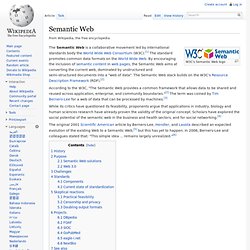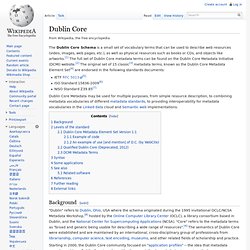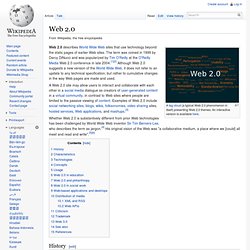

What's in store at Data Day 2014? Geekaustin. Human Side of Business. Semantic Web. W3C's Semantic Web logo The Semantic Web is a collaborative movement led by international standards body the World Wide Web Consortium (W3C).[1] The standard promotes common data formats on the World Wide Web.

By encouraging the inclusion of semantic content in web pages, the Semantic Web aims at converting the current web, dominated by unstructured and semi-structured documents into a "web of data". The Semantic Web stack builds on the W3C's Resource Description Framework (RDF).[2] According to the W3C, "The Semantic Web provides a common framework that allows data to be shared and reused across application, enterprise, and community boundaries. While its critics have questioned its feasibility, proponents argue that applications in industry, biology and human sciences research have already proven the validity of the original concept. History[edit] The concept of the Semantic Network Model was formed in the early 1960s by the cognitive scientist Allan M.
Dublin Core. The Dublin Core Schema is a small set of vocabulary terms that can be used to describe web resources (video, images, web pages, etc.), as well as physical resources such as books or CDs, and objects like artworks.[1] The full set of Dublin Core metadata terms can be found on the Dublin Core Metadata Initiative (DCMI) website.[2] The original set of 15 classic[3] metadata terms, known as the Dublin Core Metadata Element Set[4] are endorsed in the following standards documents: IETF RFC 5013[5]ISO Standard 15836-2009[6]NISO Standard Z39.85[7] Dublin Core Metadata may be used for multiple purposes, from simple resource description, to combining metadata vocabularies of different metadata standards, to providing interoperability for metadata vocabularies in the Linked data cloud and Semantic web implementations.

Background[edit] Levels of the standard[edit] The Dublin Core standard originally includes two levels: Simple and Qualified. Enterprise 2.0. Enterprise 2.0 is "the use of emergent social software platforms within companies, or between companies and their partners or customers".[1] It aims to help employees, customers and suppliers collaborate, share, and organize information via Web 2.0 technologies.

History[edit] Harvard Business School Professor Andrew McAfee coined the term "Enterprise 2.0" in 2006 to describe how the Web 2.0 "technologies could be used on organizations' intranet and extranets".[2] Common business capabilities[edit] Expertise location[edit] Expertise-location capability provides corporations with the ability to solve business problems that are difficult to articulate or communicate explicitly and that involve highly skilled people.
Corporate blogging[edit] Like personal blogs, corporate blogs use blogging technology - in this case for leadership messages, online journals and knowledge-management forums. Corporate wikis[edit] Web 2.0. A tag cloud (a typical Web 2.0 phenomenon in itself) presenting Web 2.0 themes.

An interactive version is available here. Web 2.0 describes World Wide Web sites that use technology beyond the static pages of earlier Web sites. The term was coined in 1999 by Darcy DiNucci and was popularized by Tim O'Reilly at the O'Reilly Media Web 2.0 conference in late 2004.[1][2] Although Web 2.0 suggests a new version of the World Wide Web, it does not refer to an update to any technical specification, but rather to cumulative changes in the way Web pages are made and used. List of social bookmarking websites. Austin Center for Design Social Innovation and Design Education: 2013 - 2014 Speaker Series. About the Speaker Series We are thrilled to announce Austin Center for Design's inaugural speaker series.

Join leaders in design, business and education as they host talks and invite conversation on a wide range of topics. We'll explore the intersection of business and design, how to rethink policy, and the changing notion of traditional education. You'll hear from lively and local leaders speaking to an audience of lively and local innovators: designers, policy makers, business leaders, technology officers, students, alumni, and visionaries. Upcoming Speakers Wednesday, April 23, 2014, 6:00pm Steve WelchCo-Founder and Managing Partner, DreamIt Ventures "Don't Sacrifice Social Capital for Venture Funding" DCMI Home: Dublin Core® Metadata Initiative (DCMI) American Society of Information Science and Technology, UT Student Chapter (ASIS&T) Austin Center for Design Social Innovation and Design Education: 2013 - 2014 Speaker Series.